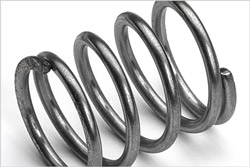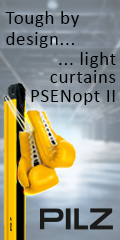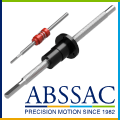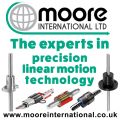
Posted to News on 8th Mar 2019, 09:24
Standard and custom spring specification - what to consider
Chris Petts, Managing Director of Lee Spring, explains what factors should be considered when selecting a catalogue spring or specifying a custom product.

The following brief guide to spring design will help machine designers when they are selecting standard springs from a catalogue or designing and specifying custom springs for an application.
Principles of spring design
Hooke's Law is a principle of spring design relating to load and deflection. It states that a restoring force due to a spring is proportional to the distance the spring is deflected and acts in the opposite direction. Another principle of spring design is Spring Rate (R), which is the ratio of force per unit of deflection.
Spring design elements
Direction of wind - A coil spring can be wound in a left-hand or right-hand direction, in the same way as a screw thread. The direction of wind, therefore, is a primary element of spring design. This can be particularly important depending on how the spring will be used. For instance, when one spring is required to operate within another spring, the springs should be designed to wind in opposite directions to avoid them becoming wound together. Or if the spring is to be screwed onto a threaded component it must follow the same thread direction.
Spring squareness - The squareness of a spring relates to the angular difference between the outside of the spring diameter and the straight edge of the spring when it is stood on its end.
Spring parallelism - Spring parallelism relates to how parallel the ends of the spring are to one another.
Spring diameter - Spring diameter can either refer to the outside diameter (OD), which is important when the spring is to be used in a cavity, or the inside diameter (ID), which is important for springs required to work over a rod or shaft. The mean diameter is more commonly used when calculating for stress or deflection.
Free length - This is the overall spring length when the spring is an unloaded or 'free' position. Where definite loads are specified, the free length of the spring should be an approximate dimension that can be varied to meet the load requirements.
Spring index - This is the ratio of the mean diameter to the diameter of the wire. A high index spring has a smaller wire and a larger spring diameter, such as a Lite Spring, whereas a low index spring has a larger wire diameter and a smaller spring diameter, such as a die spring.
Load (P) - Load refers to the force required to compress the spring to a specific height. This is different to spring rate, which is the amount of force required to compress or extend the spring a standard deflection unit.
Solid height - The solid height of a spring is the length of spring when the coils are closed. This may be important in some applications and, if so, should be specified as a maximum allowable.
Number of coils - The number of coils required in a spring should be specified as a reference figure. It is important to distinguish between whether the number of coils relates to active coils, which are free to deflect under a load, or total coils, which also includes the outer coils forming the ends that will not defect under load.
Pitch - Spring pitch is a dimension that relates to the distance between the centres of adjacent coils.
Spring set - Before its first compression the spring's free height may be longer than required, which is a common manufacturing occurrence that can be corrected in one of two ways. The spring can be designed and built with a free length that includes allowance for set, allowing for length loss when the spring is compressed for the first time, or an additional manufacturing step known as 'removing the set' or 'presetting' can be taken. Also known as a 'set spring', this involves compressing the spring to the solid height. A set spring will have a new free length that will remain consistent through future compression cycles.
Conclusion
At the end, if you do not find a stock spring - and around 50 per cent of applications still require something extra special - then the engineering team at Lee Spring are experienced at quick response specification and fulfilment. Follow the link to download a more detailed white paper A guide to spring design
Further information about Lee Spring and the company's products and services can be found at www.leespring.co.uk.

































